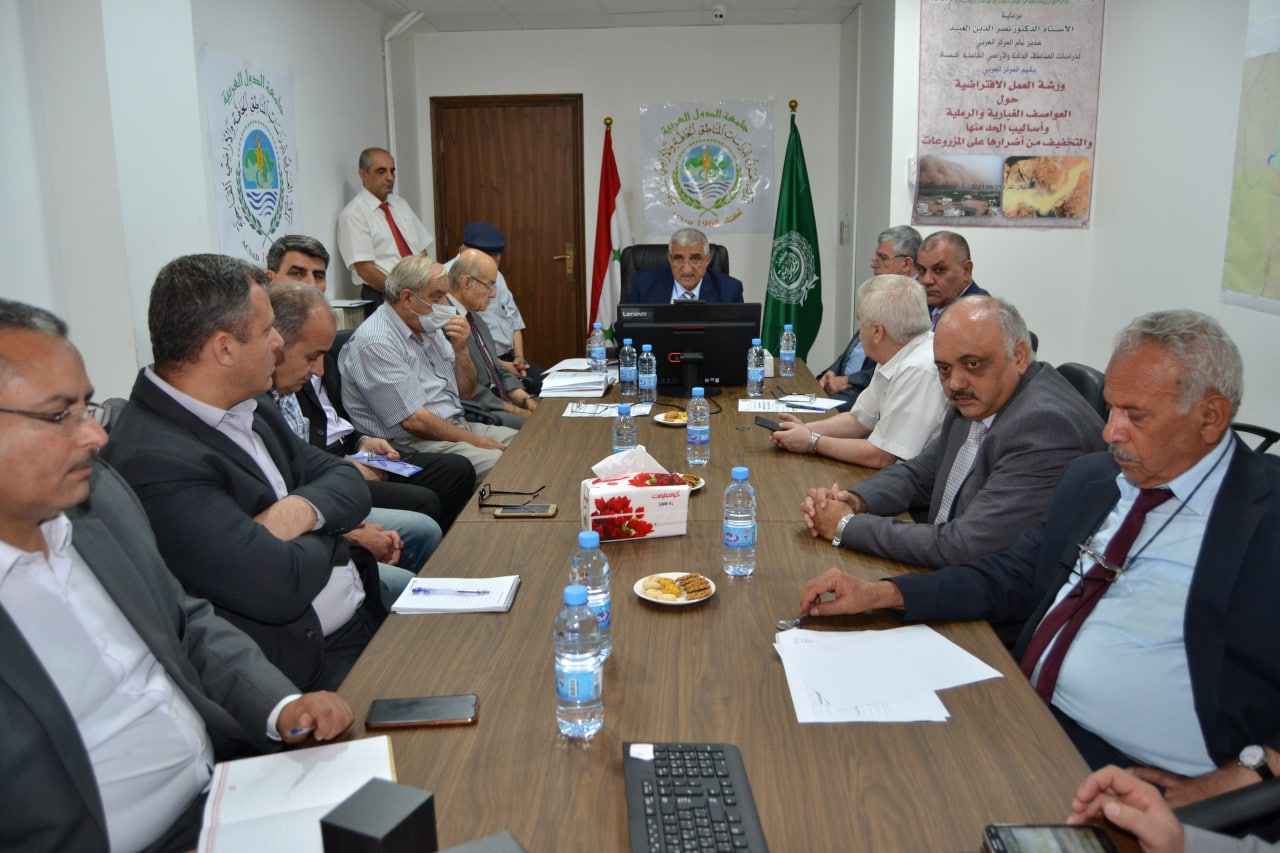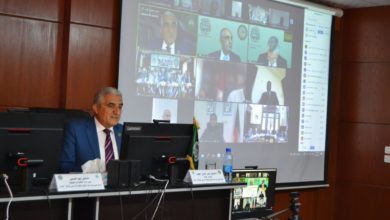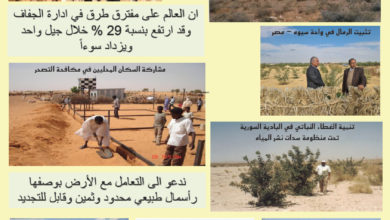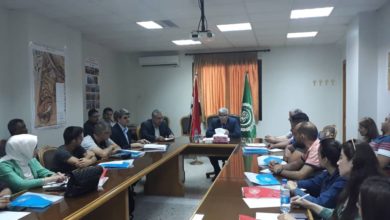ACSAD Organization / a workshop on the Dust Storms and the methods to limit them.
The Arab Center for the Studies of Arid Zones and Dryland ACSAD organized today a virtual workshop on “Dust Storms and the methods to limit them” and mitigate their damages on the crops; in the participation of Egypt, Syria, Lebanon, Palestine, Sudan, the Hashemite Jordanian Kingdom, the Sultanate of Oman, Kuwait, the Department of Environmental and Meteorological Affairs of the League of Arab States, the Regional Office of the Near East and North Africa of FAO’s office (Egypt), and Educational, Cultural and Scientific Organization (ALECSO.)
His Excellency, the Director-General of the ACSAD organization Dr. Nasr Edin Obaid, confirmed in a speech that the phenomena of the Dust storms and the methods to limit them is one of the most critical and dangerous phenomena widespread in the arid and semi-arid areas in the world. Especially in our Arab world, where many adverse effects accompany it on environmental components and human health.
He also exemplified that the global communities represented by the Secretariat-General of the international convention of desertification combat were calling for enhancing international efforts to mitigate its adverse effects by preparing the national and regional policies and strategies, stand-by for early warning, dangers evaluation, and damages inventory. It also called for forming an essential international union to deal with Dust Storms’ issues.
Dr. Obaid added, “the Dust Storms Phenomena is a problem with environmental and socio-economic dimensions. It causes enormous damages to the environment and general health. The losses due to Dust Storms are estimated at some 13 billion dollars annually in the Arab region. Also, the dust amount moveable by the dust storms in the Syrian Badia was estimated at millions of tons, which decline the productivity capacity of cultivational lands and natural pasture; decreased the fruit trees and crops productivity, damaging the population centers and economic and vital premises.
He also pointed to ACSAD’s prominent role in events and activities it implemented in combating Dust and Sand Storms field; diminish them in Syria and the Arab world that declined erosion processes and decreased the missing soil amount because of the erosion, and working on dune fixations. As a result, remarkable positive development in plant cover was manifested in plant variety abundance, the reappearance of endangered plant types, which helped diminish Dust and Sand Storms blew from hot regions, and the return of wildlife and biodiversity again to the regions that were undergone to development.
He also said, “this workshop is a continuation of the serious and distinguished work conducting by ACSAD to preserve the natural resources through its accumulated and diverse experiences. Including sustainable land management, rational use of water, deriving crop species resilient to drought, and fruit trees resilient to environmental stresses. In addition to restoring degraded lands and mitigating the adverse effects of drought and climate changes.
In the closure of his speech, the ACSAD Organization Director-General praised the participators’ efforts in the actions of this informative workshop highly, hoping that it would add new dimensions of knowledge and science for them. He pledged to put all the ACSAD Organization’s potentials in the service of joint Arab work.
The workshop highlights the importance of Dust Storms monitoring and the damages resulting from them on the environment, economy, and agriculture, exchanging the scientific expertise on the procedures that limit the Dust Storms and mitigating the damages on the crops.
A group of Arab and Syrian researchers in ACSAD presented an inclusive presentation on the Dust Storms and their mechanical and physiological impacts on crops, the United Nations’ role in combating dust and sand storms, and ACSAD’s role in limiting them and adaptation to climate changes. In addition to storms’ impact on the environment, and monitoring and modeling methods of the Dust Storms using remote sensing technologies.




